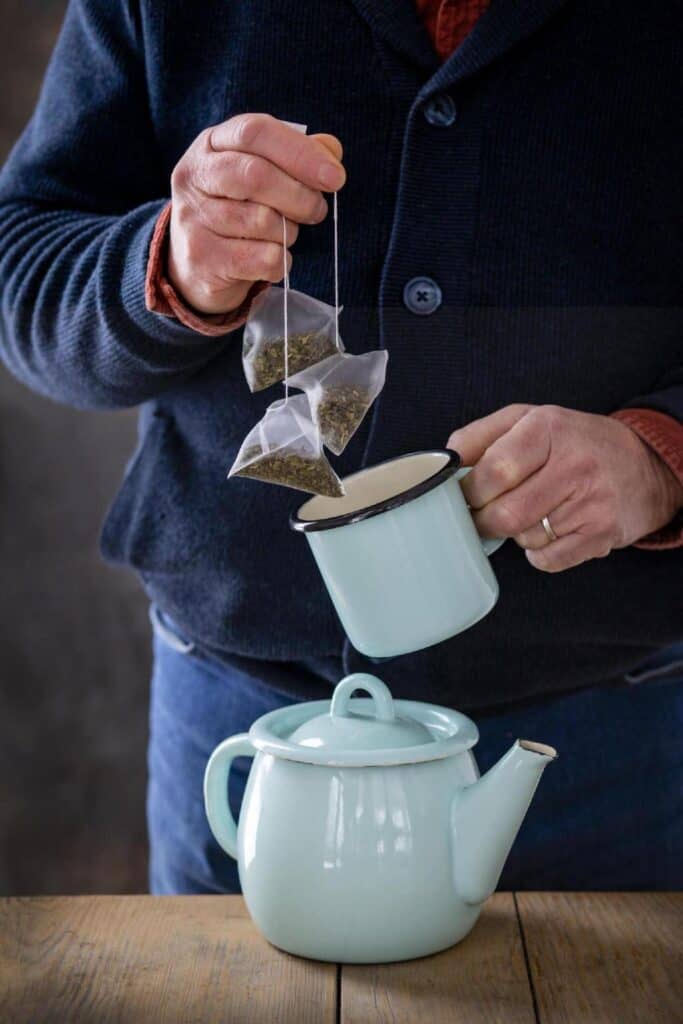Why Does Green Tea Turn Brown? A Deep Dive into the Mystery of Green Tea’s Color

Green tea is a beloved beverage worldwide for its health benefits and soothing qualities. I can’t even count how many times I’ve enjoyed a warm cup to start my day or unwind in the evening. But there’s always been this one mystery that left me scratching my head—why does green tea sometimes turn brown instead of maintaining that vibrant, crisp green I expect?
It’s happened to me more times than I’d like to admit, and it’s something I’ve always wondered about. After all, the last thing you want is for your cup of tea to lose its freshness and flavor before you even take a sip. It got me thinking: What’s really behind this color change, and does it mean anything for the quality of the tea?
If you’ve ever brewed a pot of green tea only to be greeted by a brownish hue instead of that beautiful green color, you’re not alone. The reason behind this change can be a bit more complex than you might think.
Is it the way we brew it? Does the tea lose its flavor over time? And most importantly, can you prevent this from happening again?
In this post, I’m going to take you through the main causes of why green tea turns brown and what it actually means for the flavor and freshness. You’ll also get some tips on how to preserve the natural color and taste of your green tea, ensuring you enjoy every cup at its best.
By the end of this article, you’ll be armed with all the information you need to keep your green tea fresh, vibrant, and delicious. No more wondering if your tea is still good or if you’ve accidentally ruined a perfectly good pot. Stick with me, and let’s unravel this mystery together!
The Role of Oxidation in Green Tea

Oxidation is the main culprit behind the browning of green tea. You’ve probably heard the word “oxidation” in the context of fruit turning brown, like an apple left out on the counter. Well, the same thing happens to tea leaves. When green tea leaves are exposed to air, the polyphenols (the antioxidants responsible for green tea’s color and health benefits) begin to break down. This chemical reaction causes the leaves to oxidize, which in turn darkens the tea.
Interestingly, oxidation is a natural process that happens to all tea leaves over time, but the extent to which it occurs depends on factors like storage, brewing time, and even the type of green tea. So, if you leave your tea exposed to air for too long, you might notice the leaves becoming darker, and the brewed tea turning from green to brown.
Tip: To prevent oxidation, keep your tea in an airtight container and store it in a cool, dark place. That way, the tea stays fresh and vibrant for longer.
The Impact of Water Quality on Tea Color
Another factor that can cause your green tea to turn brown is poor water quality. Water plays a huge role in how your tea turns out, both in flavor and color. If your water has high mineral content or impurities, it can interact with the tea leaves and cause the tea to discolor.
Hard water, for example, is high in calcium and magnesium, which can react with the tea’s compounds and make the tea darker. If your water is too alkaline or has a high pH, it could also cause the polyphenols in the tea to break down more quickly, leading to a brownish tint in your cup.
How to Fix It: Use filtered or spring water when brewing your green tea. This will ensure that there are no unwanted minerals or impurities in the water to affect the color and taste of the tea.
Brewing Time and Temperature Matters
Brewing time is another critical factor that determines whether your green tea stays bright or turns brown. Green tea is delicate, and if you brew it for too long or at too high of a temperature, the chlorophyll in the leaves breaks down, causing the tea to turn brown.
Most green teas should be brewed for just 1-3 minutes at around 170-180°F (76-82°C). Brewing it too long will not only change the color but also make the tea taste bitter. Why? Well, when you brew green tea for too long, you release more tannins—the compounds responsible for the bitter, astringent taste.
What’s the sweet spot?
- Brewing time: 1-2 minutes
- Water temperature: 170-180°F (76-82°C)
This helps maintain the fresh, grassy flavor that makes green tea so refreshing and keeps the color intact.
The Different Varieties of Green Tea and Their Color Profiles
Not all green teas are created equal. Some varieties are naturally more prone to turning brown than others. For example, matcha—a finely ground green tea powder—has a vibrant green color, but when brewed for too long, it can also turn brown. Similarly, sencha, one of Japan’s most popular green teas, has a bright yellow-green color when brewed correctly, but if you let it steep too long, it can turn a dull brown.
Here are some common types of green tea and their color profiles:
| Green Tea Variety | Color When Brewed | Common Flavor Profile | Brown When Over-Brewed? |
| Sencha | Yellow-green | Grassy, vegetal | Yes |
| Matcha | Bright green | Vegetal, umami | Yes |
| Longjing (Dragon Well) | Pale green | Sweet, slightly nutty | Less likely, but possible |
| Gyokuro | Deep green | Sweet, umami | Less likely, but possible |
As you can see, many green teas will turn brown if over-brewed or oxidized, but certain varieties like Longjing and Gyokuro tend to hold their color better.
Can You Prevent Green Tea from Turning Brown?
Fortunately, there are ways to avoid the dreaded brown tea and preserve the fresh, vibrant color of your green tea. Here’s what you can do:
- Control the Brewing Time: Follow the recommended brewing time for each specific green tea. Usually, 1-2 minutes is plenty for most varieties.
- Keep the Water Temperature Low: Don’t use boiling water. Green tea brews best at around 170-180°F (76-82°C).
- Store Your Tea Properly: As mentioned earlier, keep your green tea in an airtight container, away from light, heat, and moisture. This will prevent oxidation and preserve the tea’s quality.
- Use High-Quality Water: Filtered or spring water is ideal to ensure your tea brews to perfection.
Is Green Tea Good for You? The Health Benefits
Now that we’ve tackled the mystery of why green tea turns brown, let’s talk about why it’s so good for you! Green tea is packed with antioxidants, particularly catechins like epigallocatechin gallate (EGCG), which have been linked to a variety of health benefits.
- Boosts metabolism: Green tea is often included in weight loss plans because it can help increase metabolism and promote fat burning.
- Rich in antioxidants: These antioxidants help fight free radicals in the body, potentially lowering the risk of chronic diseases like heart disease and certain cancers.
- Supports brain health: The caffeine and amino acid L-theanine found in green tea may help improve focus, cognitive function, and mood.
- Improves dental health: Some studies suggest that green tea can reduce the growth of bacteria in the mouth, improving oral hygiene and freshening your breath.
Conclusion: Green Tea’s Color, Flavor, and Health Benefits
So, why does green tea turn brown? Oxidation, water quality, brewing time, and the type of tea you’re enjoying all play a role. Understanding these factors will help you brew the perfect cup and avoid any unwanted color changes.
But beyond the color, green tea is a powerhouse of health benefits, from boosting metabolism to protecting against disease. It’s a simple yet effective way to improve your health, one sip at a time. So, the next time you brew a cup, pay attention to the time, temperature, and storage conditions, and enjoy all the goodness that green tea has to offer.
What’s your favorite green tea variety? Let me know in the comments!






